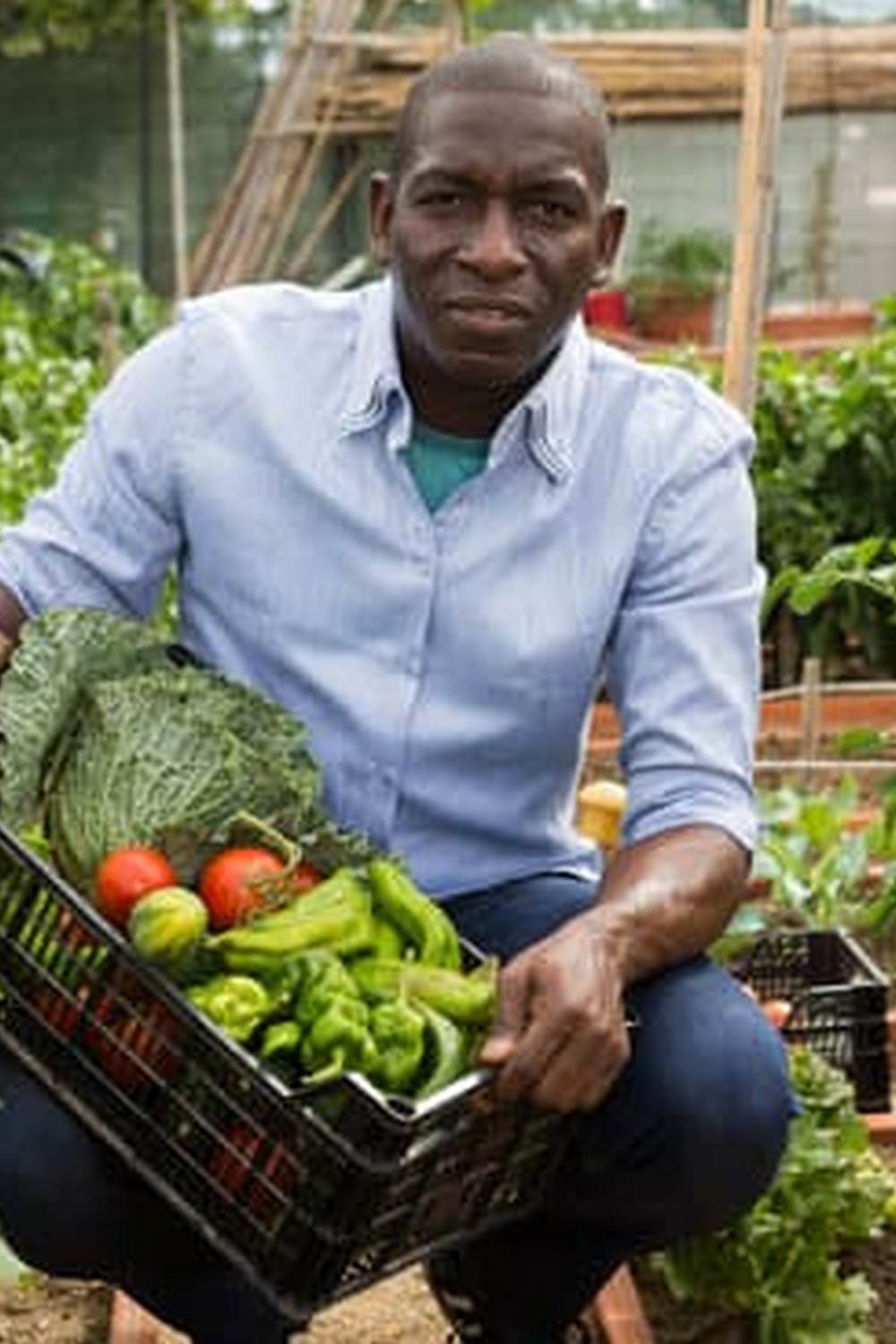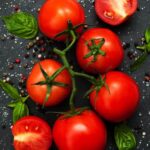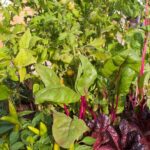Are you interested in starting your own vegetable garden but don’t have a lot of outdoor space? Look no further than vegetable container gardening combinations. Container gardening offers an excellent solution for those with limited space, allowing you to grow a variety of vegetables right on your patio, balcony, or even indoors. In this article, we will explore the world of vegetable container gardening and provide valuable information on how to get started.
Container gardening has become increasingly popular in recent years, and for good reason. It offers numerous benefits for those looking to cultivate their own vegetables. Not only does it allow you to make the most of limited space, but it also provides greater control over soil quality, water retention, and pest management. Additionally, vegetable container gardening can be a fun and rewarding way to connect with nature and enjoy the fruits of your labor.
When it comes to getting started with vegetable container gardening, there are several important factors to consider. From choosing the right containers and essential tools to selecting the best vegetable varieties for success, there is much to learn. In the following sections, we will delve into these topics and provide valuable insights to help you create a thriving container garden that produces a bountiful harvest.
Whether you are new to gardening or looking to expand your existing plantings, vegetable container gardening combinations offer endless possibilities for creating a beautiful and productive garden in any space. So let’s dive in and explore the exciting world of growing vegetables in containers.
Benefits of Container Gardening for Vegetables
Container gardening offers a wide range of benefits for growing vegetables in small spaces, making it an excellent option for urban dwellers, apartment residents, and individuals with limited outdoor space. Below are some key advantages of vegetable container gardening:
1. Space Efficiency: One of the most significant benefits of container gardening is its ability to maximize space. Whether you have a small balcony, patio, or even just a sunny windowsill, you can grow a variety of vegetables in containers. This makes it possible for anyone to enjoy the satisfaction of harvesting their own fresh produce, regardless of their living situation.
2. Better Pest Control: Container gardening can also help reduce the risk of pest infestations that often affect traditional garden beds. By growing vegetables in containers, you can more easily control the environment and protect your plants from pests and diseases.
3. Accessibility and Mobility: Another advantage of vegetable container gardening is its accessibility and mobility. Containers can be placed at convenient heights for watering, fertilizing, and harvesting, making it easier for individuals with physical limitations to tend to their plants.
In addition to these benefits, vegetable container gardening allows for creative combinations that make the most out of limited space. From stacking different-sized containers to planting companion vegetables together, there are countless options for designing attractive and productive container gardens. These combinations not only maximize space but also contribute to healthier and more abundant crops by promoting beneficial interactions between compatible plant varieties.
Choosing the Right Containers for Vegetable Gardening
When it comes to vegetable container gardening, choosing the right containers for your plants is crucial for their growth and success. The type of container you select can greatly impact the health and productivity of your vegetables. There are several factors to consider when choosing containers for your vegetable garden, including material, size, and drainage.
One of the most popular options for vegetable container gardening is using terracotta or ceramic pots. These types of containers are not only visually appealing, but they also provide good insulation for the roots of your plants. However, it’s important to keep in mind that these materials can dry out quickly and may require more frequent watering.
Another great option for vegetable container gardening is using wooden barrels or crates. Not only do these containers provide a rustic and charming aesthetic to your garden, but they also offer plenty of depth for root growth. Just make sure to line wooden containers with plastic to prevent them from rotting over time.
For those looking for a more budget-friendly option, plastic containers are also a great choice for vegetable gardening. They are lightweight, durable, and come in a variety of sizes and shapes. Plus, plastic containers retain moisture well and are easy to move around as needed.
| Container Type | Advantages |
|---|---|
| Terracotta/Ceramic Pots | Visually appealing; Good insulation |
| Wooden Barrels/Crates | Rustic aesthetic; Plenty of depth for root growth |
| Plastic Containers | Budget-friendly; Lightweight and durable |
Essential Tools and Supplies for Successful Vegetable Container Gardening
When it comes to successful vegetable container gardening, having the right tools and supplies is essential for a bountiful harvest. One of the most important items you’ll need is a selection of containers in various sizes to accommodate different types of vegetables.
Look for containers that have good drainage and are large enough for the root systems of the plants you want to grow. Additionally, investing in lightweight, durable containers will make it easier to move them around as needed.
In addition to containers, you’ll also need quality potting mix specifically designed for container gardening. This type of soil provides good drainage and aeration, which is essential for healthy root growth. It’s also a good idea to have a trowel, hand rake, and watering can or hose with a gentle spray attachment for easy maintenance of your container garden.
Another essential supply for successful vegetable container gardening is fertilizer. Choose a balanced, slow-release fertilizer formulated specifically for vegetables. This will provide your plants with the nutrients they need throughout the growing season. Additionally, having some organic pest control options on hand, such as neem oil or insecticidal soap, can help you address any pest issues that may arise without using harmful chemicals.
When it comes to tools and supplies for successful vegetable container gardening, being prepared with the right equipment will set you up for a productive and rewarding growing experience. By investing in quality containers, potting mix, gardening tools, fertilizer, and pest control options, you’ll be well-equipped to create thriving vegetable container gardening combinations right in your own small space.
Best Vegetable Varieties for Container Gardening
When it comes to vegetable container gardening, choosing the right varieties is essential for a successful harvest. Not all vegetables thrive in containers, so selecting the best ones for this type of gardening is crucial. Here are some of the top vegetable varieties that are well-suited for container gardening:
- Tomatoes: Compact and determinate varieties such as Patio, Tiny Tim, and Tumbling Tom are perfect for growing in containers. They produce an abundance of delicious tomatoes and can be easily supported with cages or stakes.
- Peppers: Both sweet and hot peppers do well in containers. Varieties like Redskin, Sweet Heat, and Mini Bell are ideal choices for small spaces and can be grown on patios or balconies.
- Herbs: While not technically vegetables, herbs like basil, thyme, rosemary, and parsley are excellent options for container gardening. They not only add flavor to your meals but also look beautiful in a variety of containers.
In addition to these popular choices, other vegetables that thrive in containers include lettuces, radishes, carrots, and green onions. When selecting vegetable varieties for your container garden, consider the amount of sunlight your space receives and the size of the containers you have available.
When planning your vegetable container gardening combinations, it’s important to consider the growth habits of each plant as well as their watering and sunlight needs. By selecting the right varieties for your specific growing conditions and carefully arranging them in suitable containers, you can create a bountiful and visually appealing container garden regardless of how much space you have available.
Tips for Success
When it comes to vegetable container gardening, the success of your plants heavily relies on the quality of the soil, proper watering techniques, and effective fertilizing. Utilizing these tips for success will help ensure that your vegetables thrive in their container gardens.
Soil
Choosing the right soil is crucial for the success of your vegetable container garden. Look for a high-quality potting mix that is well-draining and has a good balance of organic matter. Avoid using regular garden soil, as it can become compacted in containers and hinder root growth. Consider adding some perlite or vermiculite to improve aeration and drainage.
Watering
Proper watering is essential for the health of your container-grown vegetables. Make sure to water consistently, keeping the soil evenly moist but not waterlogged. Check the moisture level frequently by sticking your finger into the soil; if it feels dry about an inch below the surface, it’s time to water. During hot weather, you may need to water daily, while in cooler conditions, you can reduce frequency.
Fertilizing
Since container-grown vegetables have limited access to nutrients compared to those grown in open ground, it’s important to fertilize regularly. Choose a balanced fertilizer specifically formulated for vegetables and follow the instructions on the label. You can also use organic options like compost or fish emulsion for a more natural approach. Be mindful not to over-fertilize, as this can lead to poor plant growth or even damage your vegetables.
Implementing these tips will greatly enhance the success of your vegetable container gardening combinations and ensure a bountiful harvest of fresh produce from your small space garden.
Creative Container Gardening Combinations for Small Spaces
When it comes to vegetable container gardening combinations, creativity is key, especially when working with limited space. One of the best ways to maximize your small gardening area is to select vegetables that can be planted together in the same container. This not only saves space but also creates a visually appealing and productive garden.
Some popular vegetable container gardening combinations for small spaces include pairing tomatoes with basil, peppers with parsley, and lettuce with radishes. These combinations not only work well together but also complement each other’s growth habits and watering needs. When choosing which vegetables to plant together, it’s important to consider their sunlight requirements and the depth of the container needed for proper root development.
With advancements in hybrid vegetable varieties, there are now more options than ever for creating successful vegetable container gardening combinations. For example, compact or dwarf versions of traditional garden vegetables are ideal for small containers. Additionally, many seed companies offer pre-designed seed mixtures specifically tailored for container gardening, making it easier than ever to create beautiful and bountiful arrangements in limited space.
In addition to selecting compatible vegetable combinations, incorporating flowers and herbs into your container gardens can also add aesthetic appeal and functional benefits. Flowers like marigolds can help repel pests, while herbs like mint can attract beneficial insects. This not only enhances the visual appeal of your small space garden but also provides additional benefits for overall plant health.
| Vegetable Combinations | Benefits |
|---|---|
| Tomatoes with Basil | Basil helps repel pests that commonly affect tomatoes. |
| Peppers with Parsley | Parsley attracts beneficial insects that prey on pepper pests. |
| Lettuce with Radishes | Radishes can help keep soil loose around delicate lettuce roots. |
How to Maintain and Harvest Vegetables in Container Gardens
Maintaining Your Vegetable Container Garden
Maintaining a vegetable container garden is crucial to ensure a bountiful harvest. Regular maintenance tasks include watering, fertilizing, checking for pests and diseases, and pruning as needed. It is important to monitor the moisture levels in the containers, as the soil in containers tends to dry out faster than traditional garden beds. Additionally, regular fertilization is essential since container plants have limited access to nutrients compared to those planted directly in the ground.
Harvesting Your Container Grown Vegetables
Harvesting your vegetables from a container garden can be just as satisfying as harvesting from an in-ground garden. When it comes to harvesting, timing is key.
Different vegetables have different indicators that they are ready for harvest; for example, tomatoes should be harvested when they are firm and fully colored, while leafy greens like lettuce and spinach can be picked as soon as they reach a desirable size. Be sure to use clean tools when harvesting to prevent the spread of diseases among your plants.
Preserving Your Harvest
Once you have successfully harvested your vegetables, there are various ways of preserving your bounty. You can enjoy your fresh produce immediately or consider options such as canning, freezing, fermenting, or pickling to extend the shelf life of your harvest. Preserving your harvest allows you to enjoy the fruits of your labor long after the growing season has ended.
Troubleshooting Common Issues in Vegetable Container Gardening
When it comes to vegetable container gardening, there are a few common issues that gardeners may encounter. One of the most common problems is overwatering or underwatering the plants. It’s crucial to monitor the moisture levels in the soil and adjust watering accordingly. Overwatering can lead to root rot, while underwatering can cause stunted growth and wilting.
Another issue that many gardeners face is nutrient deficiencies in the soil. Since container plants have limited access to natural nutrients in the ground, it’s essential to regularly fertilize them with a balanced fertilizer. Look for a fertilizer specifically formulated for vegetables, and be sure to follow the instructions on the label for the best results.
Pests and diseases can also be problematic for vegetable container gardens. Keep an eye out for common pests such as aphids, spider mites, and caterpillars, as well as diseases like powdery mildew and blight. Consider using organic pest control methods such as insecticidal soap or neem oil to keep these issues at bay.
Additionally, practicing good garden hygiene by regularly removing dead plant material can help prevent disease spread. By being proactive and addressing these common issues early on, you can help ensure a successful vegetable container gardening experience.
Conclusion
As we look to the future of vegetable container gardening, it is clear that this method of growing vegetables will continue to gain popularity. With urbanization on the rise and limited outdoor space, container gardening provides a viable option for individuals to grow their own fresh produce. The trend towards sustainable living and the desire for organic, homegrown food further fuels the appeal of vegetable container gardening.
In addition to its practical benefits, vegetable container gardening also offers a creative outlet for gardeners. The possibilities for unique and attractive combinations of vegetables in containers are endless, making it an enjoyable and fulfilling hobby. As more people seek ways to connect with nature and experience the satisfaction of growing their own food, it is likely that vegetable container gardening will remain a preferred choice for many.
Furthermore, as advancements in technology and horticulture continue, there may be even more innovations in container design, soil formulations, and fertilizing methods specifically tailored for vegetable container gardening combinations. This could lead to even greater success and convenience for those who choose this method of growing their own vegetables. Overall, the future of vegetable container gardening looks bright, offering both practicality and enjoyment for gardeners of all levels.

If you’re looking to get into vegetable gardening, or are just looking for some tips on how to make your current garden better, then you’ve come to the right place! My name is Ethel and I have been gardening for years. In this blog, I’m going to share with you some of my best tips on how to create a successful vegetable garden.





